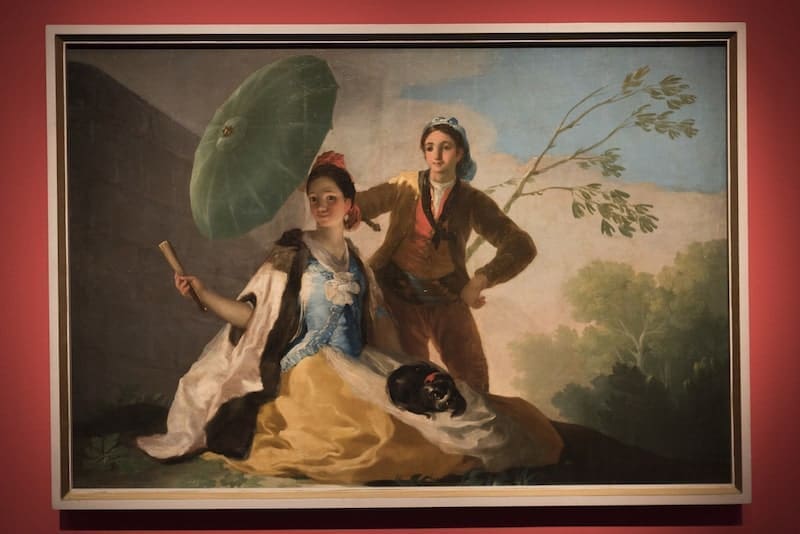Francisco de Goya y Lucientes, a titan of art whose work spans the bridge from the Old Masters to the modern era, is regarded as one of the most important Spanish artists of the late 18th and early 19th centuries. Born on March 30, 1746, in Fuendetodos, Spain, Goya’s career evolved in the shadow of the Enlightenment, amidst political turmoil and personal adversity. His art is a reflection of his keen observation of human nature, societal shifts, and the dark underbelly of the Spanish society of his time.
Early Influences and Rococo Beginnings
Goya began his artistic journey under the tutelage of painter José Luzán, and later, his talent flourished in Madrid and Rome. Initially, he was influenced by the Rococo style, evident in his early works, which were characterized by light, playful themes. However, as Goya’s career progressed, his work took on a more serious tone, reflecting deeper, often darker themes of war, social unrest, and human folly. This transformation is vividly captured in his series of etchings, “Los Caprichos,” which critiques the follies and vices of Spanish society with a sharp and often sardonic eye.
Portraiture and the Gaze into the Soul
One of Goya’s most significant contributions to art is his portrait work. As a court painter to the Spanish Crown, Goya had an unparalleled ability to capture the essence of his subjects, rendering their power, their vulnerability, or their personal quirks with equal ease. His portraits of the Spanish royalty and nobility are not mere flattery but are imbued with a psychological depth that reveals the complex human beings beneath their regal exteriors. “The Family of Charles IV” is a prime example, where Goya presents the royal family in a light that is at once respectful and subtly critical, hinting at the complexities and contradictions of their characters and their roles.
The Dark Witness of War
In contrast to his courtly commissions, Goya’s personal works often delve into themes of war, suffering, and the darker aspects of human nature. “The Disasters of War” series of etchings, produced between 1810 and 1820, starkly portrays the horrors of the Peninsular War. Through these works, Goya not only documents the brutal realities of conflict but also expresses his deep empathy for the victims of war’s atrocities. His ability to convey the suffering and resilience of the human spirit in the face of horror remains unparalleled.
The Enigma of the Black Paintings
A transformative chapter in Goya’s artistic journey is epitomized by his profound work, “Saturn Devouring His Son,” nestled within the enigmatic collection known as the Black Paintings. To explore this enigmatic masterpiece, and buy this painting click here. Manifesting directly on the walls of his residence, Quinta del Sordo, this compelling piece portrays the mythic Saturn in the act of consuming one of his offspring, serving as a potent allegory for the relentless march of time and its consuming nature. The painting’s intense emotional impact, underscored by its stark color palette and turbulent brushwork, signifies a bold divergence from Goya’s earlier stylistic endeavors. This artwork, along with the Black Paintings, reflects Goya’s growing disenchantment with society. It also reveals his deep contemplation of the human psyche in his later years.

Goya’s Enduring Influence and Innovations
Beyond the haunting images of the Black Paintings, Goya’s influence extends through his exploration of various themes and techniques. His bold use of light and shadow, unflinching portrayal of the human condition, and innovative composition have left an indelible mark on the art world. Goya’s legacy is that of an artist who explored the soul of society and the individual. He captured both the beauty and brutality of human experience with unmatched honesty.
Twilight Years and Lasting Legacy
In the twilight of his career, Goya lived in voluntary exile in Bordeaux, France, continuing to work until his death on April 16, 1828. Despite the challenges of his later years, including deafness and political unrest, his creative spirit remained undimmed. Today, Francisco de Goya y Lucientes is celebrated for his technical mastery, artistic innovation, and deep understanding of humanity. He remains a pivotal figure in the transition to modern art.


